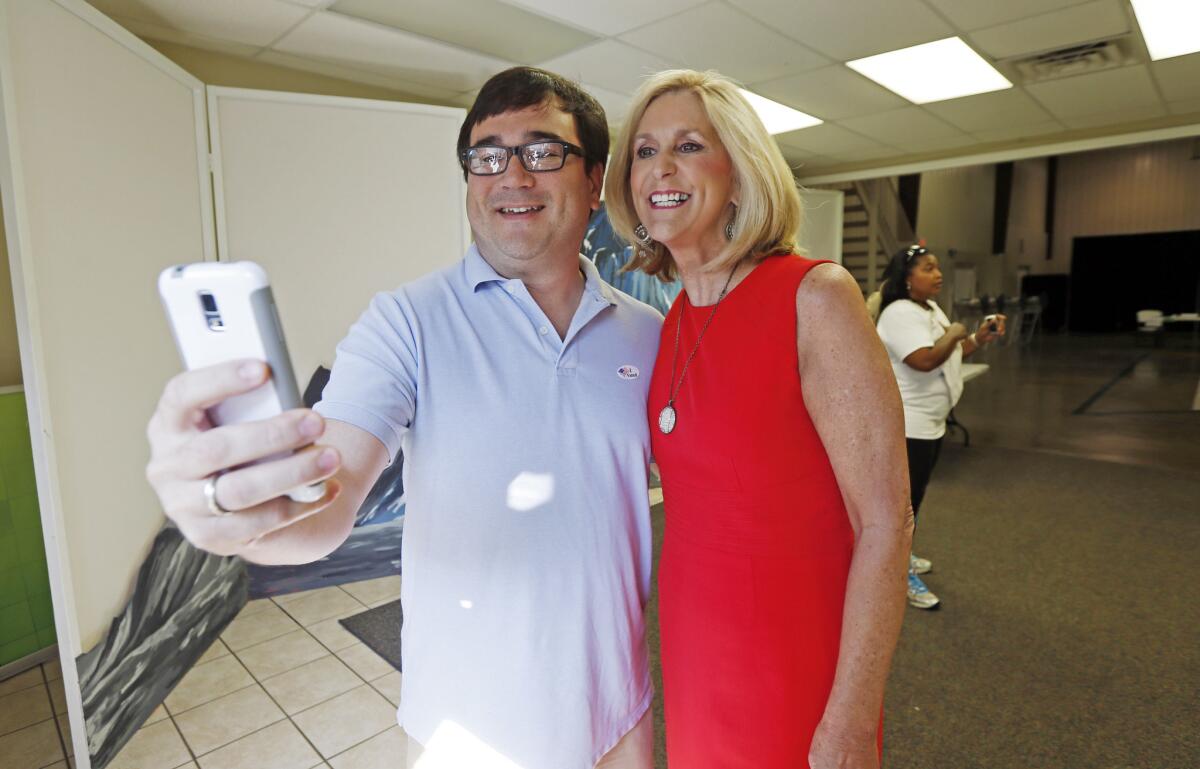Editorial: Do ‘ballot selfies’ threaten the secret ballot?

Morgan Bondurant uses his smartphone to take a selfie of himself and state Treasurer Lynn Fitch as they exit the voting precinct after voting in Madison, Miss., on Aug. 4.
- Share via
The secret ballot has never prevented citizens from telling their friends how they voted and urging them to do the same. But now the ubiquity of mobile phones with cameras allows voters the option of showing as well as telling how they exercised their franchise — by snapping a photo of their completed ballot and posting the image online.
Traditionalists might regard such “ballot selfies” as undignified or even tacky, but this week a federal judge in New Hampshire ruled that they are protected by the 1st Amendment if the government can’t prove that banning them is necessary to prevent vote-buying or coercion. It was the right decision.
In 2014, New Hampshire made it a criminal offense to take a digital image or photograph of a marked ballot and share the image on social media. The supposed justification for the law was a fear that ballot selfies would make it easier to bribe or bully voters to back a particular candidate. (Some legislators also worried that parents might pressure their adult children to cast a vote that Mom and Dad could “like.”)
The law was challenged by several voters, including a state legislator who tweeted the contents of his ballot and a man who wrote in the name of his dog on a U.S. Senate ballot and posted the image on Facebook along with the explanation that “all of the candidates SUCK.”
In striking down the measure, U.S. District Judge Paul Barbadoro said that the ban on ballot selfies deprived citizens of “their most powerful means of letting the world know how they voted.” As for the danger of vote-buying or coercion, the judge said the record contained no evidence of such corruption “since the late 1800s.”
The decision is jarring reading for people accustomed to thinking of polling places as hushed, quasi-sacred precincts. If judges elsewhere in the country adopted a similar view, some practices would have to change. In California, for example, state law says that “after the ballot is marked, a voter shall not show it to any person in such a way as to reveal its contents.” Blanket bans on photography at polling places would also be hard to justify.
But this isn’t the first time technological change has required a new interpretation of the 1st Amendment. At the same time, nothing in this decision prevents election officials from protecting the privacy of voters who don’t want to be pestered, proselytized or photographed at polling places. A voter may have the right to discreetly take a picture of his or her ballot, but that doesn’t translate into a right to photograph and post someone else’s.
Follow the Opinion section on Twitter @latimesopinion and Facebook
More to Read
A cure for the common opinion
Get thought-provoking perspectives with our weekly newsletter.
You may occasionally receive promotional content from the Los Angeles Times.









